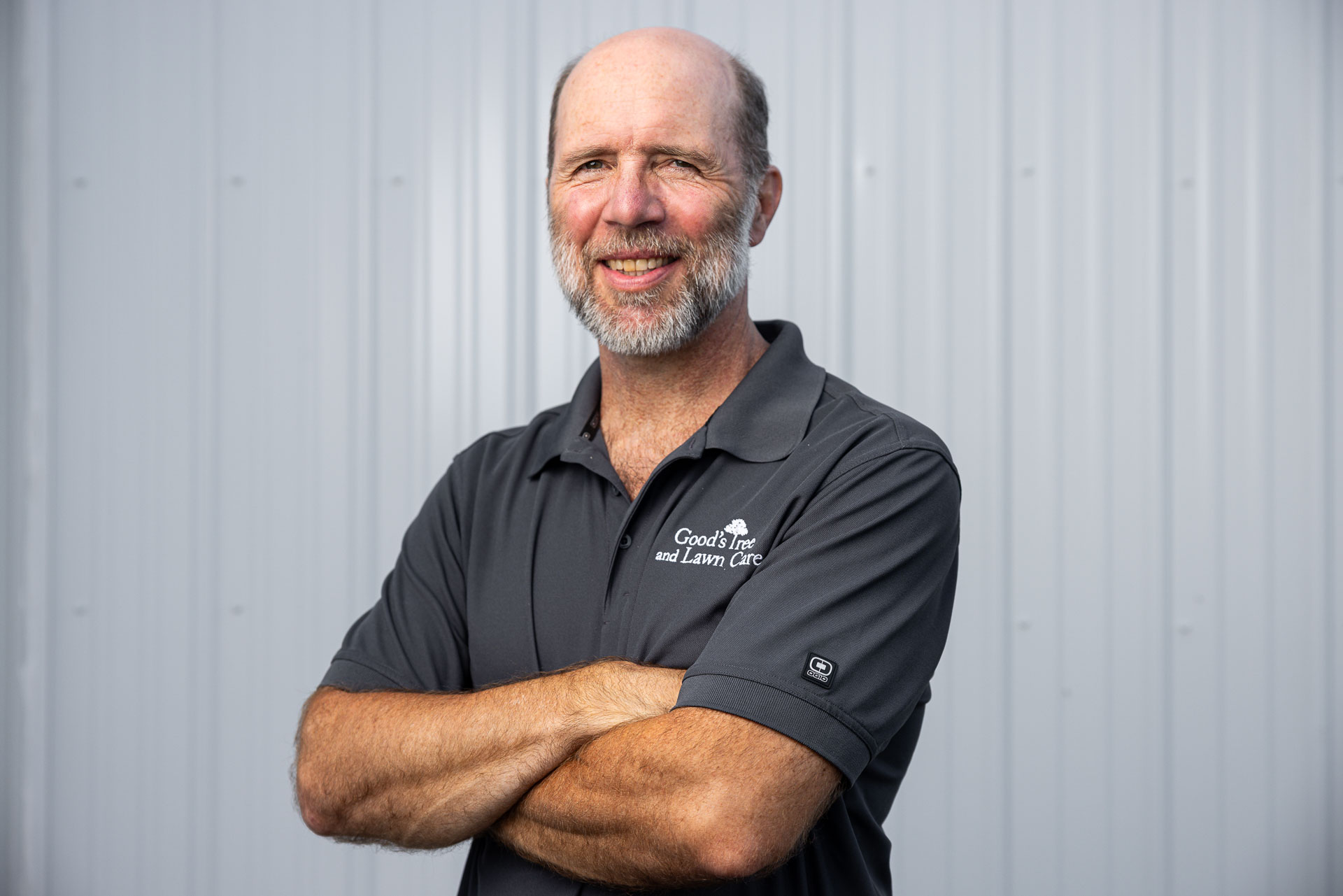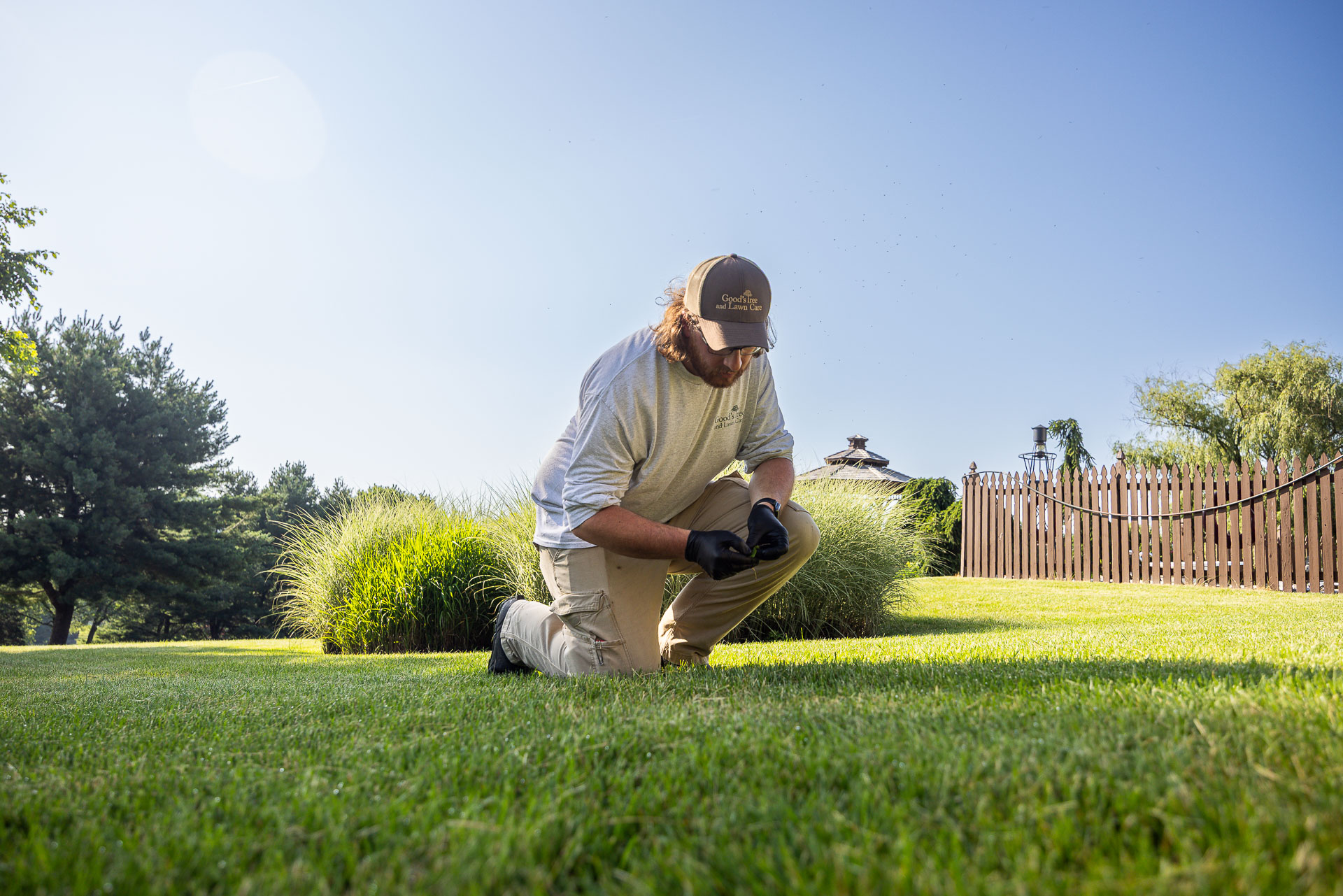Understanding Lawn Grubs and Their Impact
Grubs — the larval stage of beetles such as Japanese beetles, June beetles, and European chafers — are among the most destructive lawn pests in Central, PA. These small, white, C-shaped larvae live beneath the surface of your lawn, feeding on grass roots and causing extensive turf damage.
As they feed, grass roots are severed, leading to soft, spongy turf and dead patches that fail to recover with watering. In severe cases, grubs attract animals such as skunks, raccoons, and birds that dig up the lawn in search of food, worsening the damage and disrupting soil structure.
A healthy lawn begins below the surface, and that’s why understanding grub prevention is key to maintaining lasting turf health.
Why Grub Prevention Is Better Than Grub Control
When grub damage becomes visible, it’s often too late for simple fixes. Reactive grub treatments can help stop feeding activity but cannot reverse the root damage that has already occurred. Turf recovery takes time, expense, and careful management.
That’s why preventive grub control is the superior strategy. Preventive treatments target grubs before they hatch and begin feeding, stopping infestations before they start. By breaking the life cycle early, you protect your grass roots and ensure a thicker, healthier lawn throughout the growing season.
At Goods Tree and Lawn Care, we emphasize prevention-based lawn care programs because they provide more consistent results, reduce pesticide use, and protect your landscape investment.
Professional Grub Prevention Program by Good’s Tree and Lawn Care
Our grub prevention and control program is based on science, timing, and environmental responsibility. We use advanced products, professional-grade equipment, and turf management expertise to deliver lasting results.
Our approach includes:
- Detailed Lawn and Soil Assessment
Every property is unique. We evaluate turf density, soil health, and thatch buildup — all factors that affect grub risk. - Seasonal Preventive Treatment
Our technicians apply targeted, environmentally responsible insect control in late spring or early summer, when grubs are most vulnerable. - Proper Activation and Watering Guidance
For best results, we provide detailed watering instructions to ensure treatments penetrate to the root zone where grubs feed. - Ongoing Monitoring and Professional Support
Throughout the season, we monitor for signs of grub activity and adjust your care plan as needed to keep your lawn healthy and pest-free.
This integrated, proactive strategy is what makes Goods Tree and Lawn Care one of the most trusted providers of grub control services in [Your City/Region].
Signs of a Grub Infestation
Even with prevention, it’s important to recognize the early warning signs of grub activity:
- Patches of brown or wilted grass that do not respond to watering
- Turf that peels up easily from the soil due to root loss
- Increased presence of birds, skunks, or raccoons digging in your lawn
If you notice these symptoms, contact us promptly for a professional lawn inspection and grub treatment plan.
Sustainable Lawn Care Through Proactive Management
Preventing grubs before they cause damage is not only the most effective solution — it’s also the most environmentally responsible.
Our preventive lawn care approach focuses on soil health, turf resilience, and long-term results, minimizing the need for reactive pesticide use.
At Goods Tree and Lawn Care, we provide reliable, science-based solutions for grub prevention and lawn pest management. By focusing on prevention, we help you achieve a healthy, vibrant lawn that stands up to pests, weather, and time.

.png?width=429&height=204&name=Goods%20Tree%20Care%20Logo%202%20(2).png)





.png?width=300&height=143&name=Goods%20Tree%20Care%20Logo%202%20(2).png)